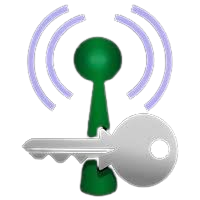WirelessKeyView is a lightweight tool by NirSoft that helps users recover saved Wi-Fi passwords stored on their Windows computer. Windows automatically stores wireless credentials for seamless reconnections, but users may forget them over time. This tool retrieves WEP, WPA, and WPA2 keys from the system registry, making it useful for recovering lost passwords.
However, accessing these stored credentials may require administrator privileges since Windows protects system files and registry entries. Running WirelessKeyView without admin rights might limit its functionality, preventing full access to all saved keys. Understanding these permission requirements ensures users can effectively retrieve network passwords while navigating potential security restrictions.
Running WirelessKeyView Without Administrator Privileges
WirelessKeyView can run without administrator privileges, but its functionality may be limited. When launched as a standard user, the tool attempts to access stored Wi-Fi passwords from the Windows registry. However, Windows restricts access to certain system files and security-sensitive areas, meaning that some network keys may not be retrievable. Users running the tool without administrative rights may see incomplete results or be unable to access specific network credentials.
Additionally, different versions of Windows enforce varying levels of security. In some cases, WirelessKeyView might still display a few saved passwords, particularly those stored under the current user’s profile. However, for full access to all stored Wi-Fi passwords, including those saved by other user accounts on the same machine, running the program with administrator privileges is recommended. If access is restricted, users may encounter errors or empty results when attempting to retrieve wireless keys without the necessary permissions.
Running WirelessKeyView as an Administrator
Running WirelessKeyView with administrator privileges allows full access to stored Wi-Fi passwords on a Windows computer. When launched as an administrator, the tool can retrieve all saved wireless network keys, including those stored in system-protected areas and registry entries restricted to standard users. This is especially useful when recovering passwords for networks previously connected to by different user accounts on the same system. By granting elevated permissions, Windows enables WirelessKeyView to bypass access restrictions and display a complete list of WEP, WPA, and WPA2 keys.
To run WirelessKeyView as an administrator, right-click on the program file and select “Run as administrator.” If prompted by the User Account Control (UAC), click “Yes” to allow the tool to make changes to the system. This ensures the software can access all necessary registry locations where Wi-Fi passwords are stored. Running with elevated privileges is particularly important on corporate or shared devices with multiple user accounts, as standard users may lack access to certain network credentials. By using administrator mode, users maximize the tool’s effectiveness while avoiding permission-related issues.
Why Administrator Privileges May Be Required
Administrator privileges may be required to run WirelessKeyView because Windows protects certain system files and registry entries where Wi-Fi passwords are stored. These security measures prevent unauthorized users from accessing sensitive information, ensuring that only users with administrative rights can retrieve all saved network credentials. Without these privileges, the tool may only be able to access Wi-Fi passwords associated with the current user account, while system-wide network keys stored under administrative access remain restricted. This is especially relevant in multi-user environments, such as corporate networks or shared computers, where different users have varying permission levels.
Additionally, Windows User Account Control (UAC) restricts non-administrative programs from making changes or accessing critical system areas. Since WirelessKeyView reads encrypted Wi-Fi keys from the Windows registry and system files, administrative rights ensure that the tool can extract all stored credentials without encountering permission errors. If the program is not run as an administrator, users may see incomplete results or be unable to retrieve passwords for networks they previously connected to. Granting administrator privileges allows full functionality, ensuring access to all stored wireless keys for recovery purposes.
Troubleshooting Permission Issues
If WirelessKeyView does not display saved Wi-Fi passwords or encounters errors, permission issues may be the cause. Since Windows restricts access to system-protected files and registry entries, running the tool without administrator privileges can prevent it from retrieving all stored network keys. One common solution is to right-click on the WirelessKeyView.exe file and select “Run as administrator.” This grants the tool elevated privileges, allowing it to access all stored Wi-Fi credentials. If prompted by User Account Control (UAC), clicking “Yes” ensures the application has the necessary permissions.
If the tool still does not retrieve passwords, antivirus software or Windows Defender might be blocking access. Some security programs flag WirelessKeyView as a “potential threat” due to its ability to extract passwords, even though it is a legitimate tool. To resolve this, temporarily disable real-time protection or add an exception for WirelessKeyView in your antivirus settings. Additionally, ensure that you are running the tool on a Windows account with administrative privileges. If you are on a work or school computer with restricted access, you may need to contact your system administrator for the necessary permissions.
Conclusion
WirelessKeyView is a useful tool for recovering saved Wi-Fi passwords, but its effectiveness depends on the permissions granted. Running the tool without administrator privileges may limit access to certain stored credentials, while running it with elevated rights ensures full retrieval of all saved network keys. Understanding these permission requirements helps users maximize the tool’s functionality and avoid common issues.
Additionally, security measures such as Windows User Account Control (UAC) and antivirus software may block or restrict WirelessKeyView’s access. By running the tool as an administrator and adjusting security settings if needed, users can successfully recover their Wi-Fi passwords while maintaining system security.
